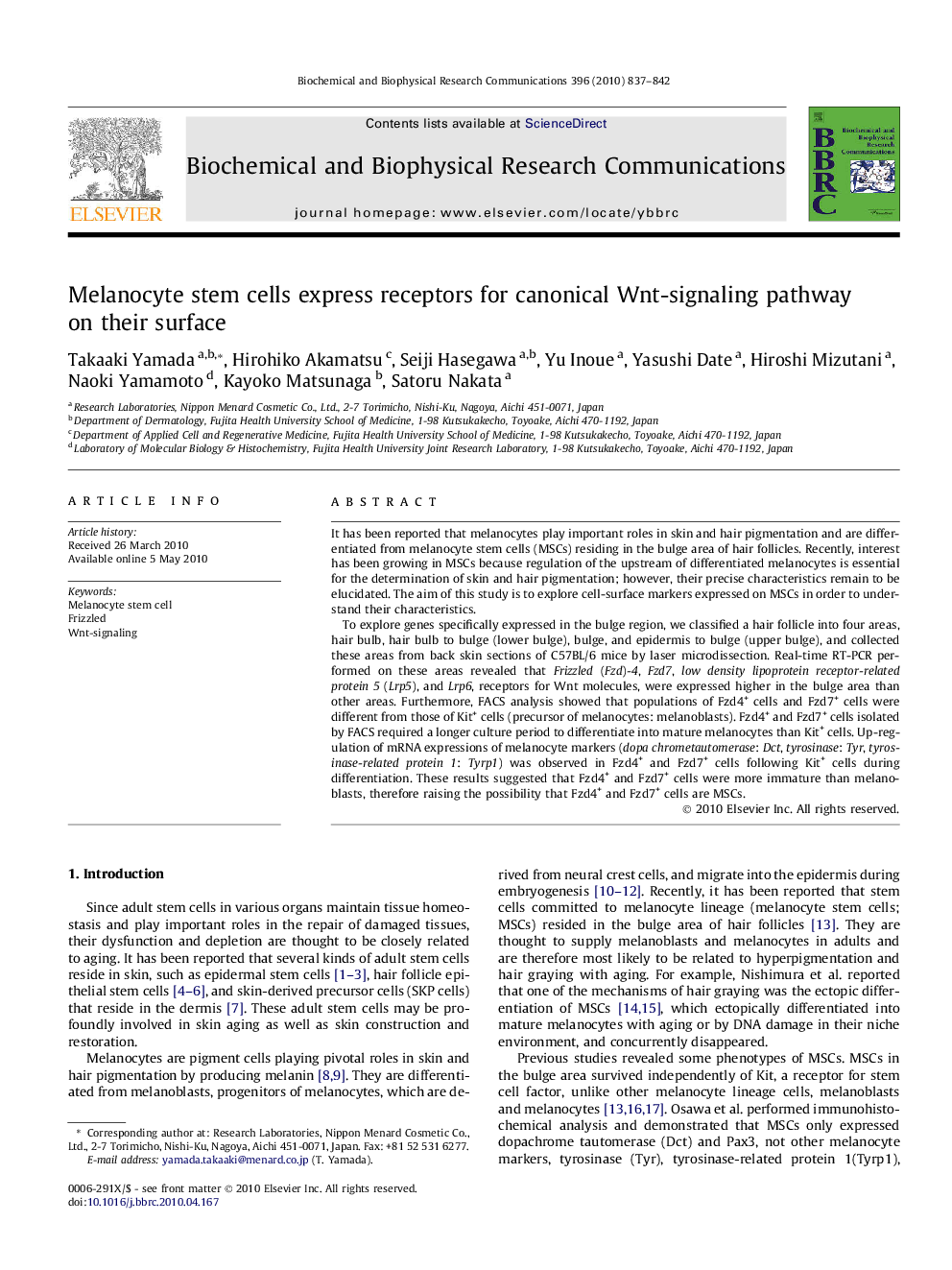| کد مقاله | کد نشریه | سال انتشار | مقاله انگلیسی | نسخه تمام متن |
|---|---|---|---|---|
| 1932040 | 1050572 | 2010 | 6 صفحه PDF | دانلود رایگان |

It has been reported that melanocytes play important roles in skin and hair pigmentation and are differentiated from melanocyte stem cells (MSCs) residing in the bulge area of hair follicles. Recently, interest has been growing in MSCs because regulation of the upstream of differentiated melanocytes is essential for the determination of skin and hair pigmentation; however, their precise characteristics remain to be elucidated. The aim of this study is to explore cell-surface markers expressed on MSCs in order to understand their characteristics.To explore genes specifically expressed in the bulge region, we classified a hair follicle into four areas, hair bulb, hair bulb to bulge (lower bulge), bulge, and epidermis to bulge (upper bulge), and collected these areas from back skin sections of C57BL/6 mice by laser microdissection. Real-time RT-PCR performed on these areas revealed that Frizzled (Fzd)-4, Fzd7, low density lipoprotein receptor-related protein 5 (Lrp5), and Lrp6, receptors for Wnt molecules, were expressed higher in the bulge area than other areas. Furthermore, FACS analysis showed that populations of Fzd4+ cells and Fzd7+ cells were different from those of Kit+ cells (precursor of melanocytes: melanoblasts). Fzd4+ and Fzd7+ cells isolated by FACS required a longer culture period to differentiate into mature melanocytes than Kit+ cells. Up-regulation of mRNA expressions of melanocyte markers (dopa chrometautomerase: Dct, tyrosinase: Tyr, tyrosinase-related protein 1: Tyrp1) was observed in Fzd4+ and Fzd7+ cells following Kit+ cells during differentiation. These results suggested that Fzd4+ and Fzd7+ cells were more immature than melanoblasts, therefore raising the possibility that Fzd4+ and Fzd7+ cells are MSCs.
Journal: Biochemical and Biophysical Research Communications - Volume 396, Issue 4, 11 June 2010, Pages 837–842